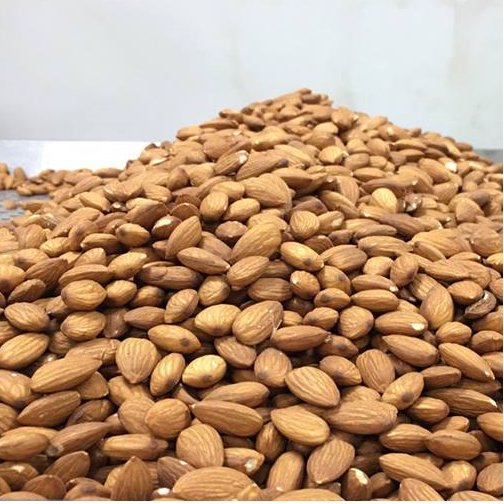Growing an almond tree from seed is a rewarding and cost-effective way to cultivate this nutritious and versatile nut right in your backyard. While it requires patience and proper care, the process is straightforward and can yield a beautiful, productive tree over time. This guide will take you through the step-by-step process of growing an almond tree from seed, covering everything from seed selection to long-term maintenance.
### **Why Grow Almond Trees from Seeds?**

Growing almond trees from seeds offers several benefits:
– **Cost-Effective:** Purchasing raw almonds and germinating them is more affordable than buying young trees.
– **Satisfaction of Home Cultivation:** Watching your tree grow from seed to maturity is a rewarding experience.
– **Eco-Friendly and Sustainable:** Growing your own almonds reduces reliance on store-bought nuts and commercial farming practices.
– **Aesthetic and Functional:** Almond trees not only produce delicious nuts but also add beauty to your garden with their stunning blossoms.
### **Step 1: Sourcing Your Almond Seeds**
The first step in growing an almond tree is obtaining the right seeds:
– Purchase **raw, untreated almonds** from a reputable nursery or seed supplier. Avoid roasted or processed almonds, as they will not germinate.
– If possible, select seeds from an almond variety suited to your climate.
### **Step 2: Stratification Process**
Since almond seeds require a period of cold exposure to break dormancy, stratification is necessary before planting.
1. **Soak the Almond Seeds:** Submerge the seeds in room-temperature water for **48 hours** to help soften the shell and initiate germination.
2. **Cold Stratification:**
– Place the soaked seeds in a moist medium such as **sand, peat moss, or a damp paper towel**.
– Seal them in a container or plastic bag and refrigerate at **34-41°F (1-5°C) for 2-3 months**.
– Check periodically for sprouting.
### **Step 3: Planting the Almond Seeds**

Once stratification is complete and the seeds have begun sprouting, it’s time to plant them.
1. **Choose the Right Soil:** Almond trees thrive in **well-draining, sandy or loamy soil** with a pH between **6.0 and 7.5**.
2. **Select a Suitable Location:** If planting outdoors, pick a **sunny spot** where the tree will receive at least **six hours of direct sunlight daily**.
3. **Prepare a Deep Pot (if starting indoors):** If growing in containers, choose a deep pot with proper drainage.
4. **Plant the Sprouted Seeds:**
– Sow the seeds **1-2 inches deep**, with the pointed tip facing downward.
– Space multiple seeds at least **12 inches apart**.
– Cover lightly with soil and water gently.
### **Step 4: Caring for Almond Seedlings**
After planting, proper care is essential to ensure the healthy growth of your almond tree.
1. **Watering:** Keep the soil **moist but not waterlogged**. Overwatering can lead to root rot.
2. **Sunlight Exposure:** Place the pot or garden bed where the seedlings will receive ample sunlight.
3. **Protection from Pests:** Keep an eye out for **birds, rodents, and insects** that may damage young plants.
4. **Transplanting:**
– Once seedlings reach **6-12 inches in height**, they can be transplanted outdoors if initially grown in pots.
– Choose a final planting site with **ample space** for root expansion and growth.
### **Step 5: Long-Term Almond Tree Care**
As your almond tree matures, proper maintenance is crucial for health and productivity.
#### **Pruning**
– Prune during the **dormant season (late winter or early spring)** to encourage strong branch structure.
– Remove dead, diseased, or weak branches to promote airflow and sunlight penetration.
– Shape the tree to create an open canopy, improving nut production.
#### **Fertilizing**

– Apply a **balanced fertilizer** in early spring to support vigorous growth.
– Use organic compost to enrich the soil and maintain fertility.
#### **Pest and Disease Management**
– **Common Pests:** Aphids, mites, and borers can affect almond trees. Use **natural insecticides** or introduce beneficial insects like ladybugs.
– **Fungal Diseases:** Monitor for leaf spot, powdery mildew, and root rot. Ensure proper spacing and **avoid excessive watering**.
### **Step 6: Patience and Harvesting Almonds**
Growing almonds from seed requires patience, as trees take **3-5 years** to produce nuts.
1. **Signs of Maturity:**
– Blossoms appear in early spring.
– Nuts develop within green hulls, which later dry and split open.
2. **Harvesting Process:**
– Harvest almonds when hulls naturally **split open** in late summer or early fall.
– Shake the tree gently to collect mature nuts.
– Remove the outer hull and dry the almonds in a warm, airy location.
### **Conclusion**

Growing an almond tree from seed at home is a rewarding journey that requires patience and care. By following these steps, you can successfully cultivate a thriving almond tree that provides both beauty and delicious, homegrown nuts for years to come. Whether for personal consumption or as a stunning addition to your garden, an almond tree grown from seed is a worthwhile investment in sustainability and self-sufficiency.
